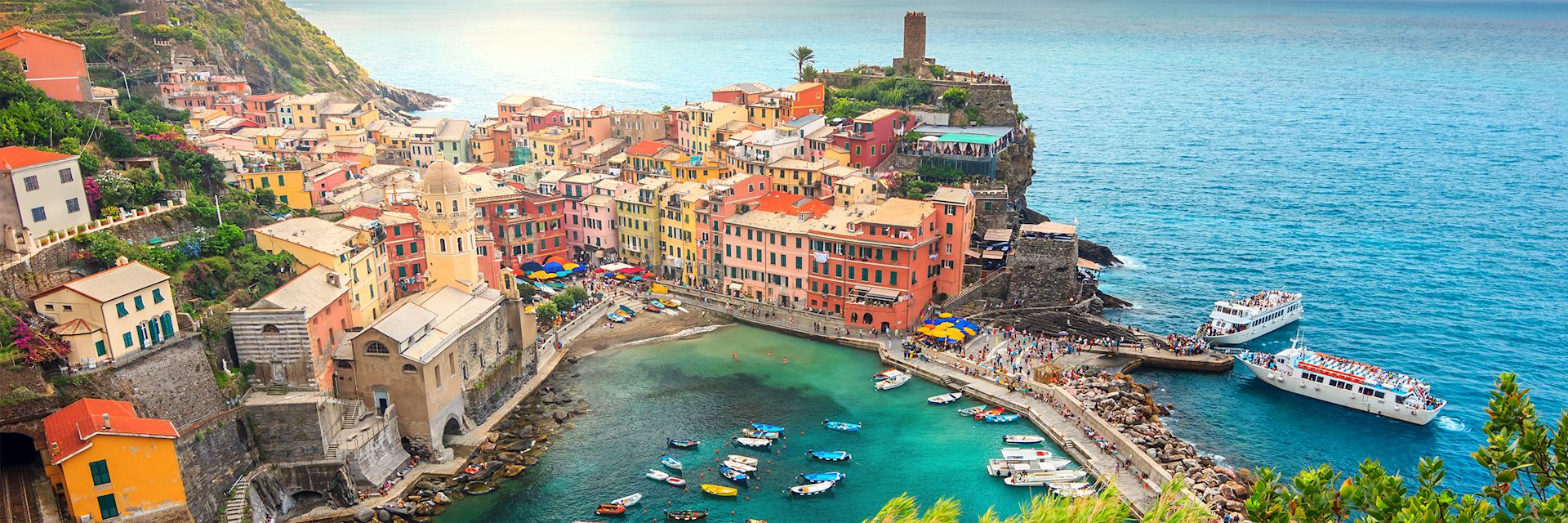By Italy specialist Cara
The five villages of the Cinque Terre sit on the Italian Riviera just east of Genoa, where the Apennines suddenly rise out of the Ligurian Sea. The tall, narrow houses are all brightly painted and seem stacked vertically on the steep and stony shoreline. Sharply terraced vineyards are carved into the sides of the mountainous coast. Ridged stone cliffs soar straight up from turquoise waters.
The inaccessible setting was intentional — the villages are said to have been strategically positioned as a way to avoid invaders or pillaging armies. For centuries, the only way to reach them was by walking on a series of narrow mule tracks or by boat. Today, this isolation means they’ve managed to retain their historic character.
People come to the Cinque Terre (literally ‘the five lands’) to admire the well-preserved communities, walk along the winding trails and take in the arresting scenery. The area’s growing popularity means that the crowds expand every year. However, a private guide and some planning can help you to recapture their unspoiled charm.
The villages of the Cinque Terre
Because the villages are small and grouped closely together, it can be tempting to try to take in all of the Cinque Terre all at once. I recommend that you take your time instead and get to know each of the fives’ distinct personalities. Spend a morning on the trails, enjoy a leisurely lunch and tour a church in the afternoon, then return the next day to take in a vineyard and some vistas.
The westernmost town is Monterosso al Mare, a popular starting point for hikers and the only one of the quintet with a substantial sand beach. The 17th-century Convento di Monterosso al Mare, a convent of the Cappuccini or Capuchin order, is visible from almost everywhere in the village. The adjacent Church of San Giovanni Battista was built out of alternating rows of white marble and dark-green serpentine stone, creating a strikingly striped façade.
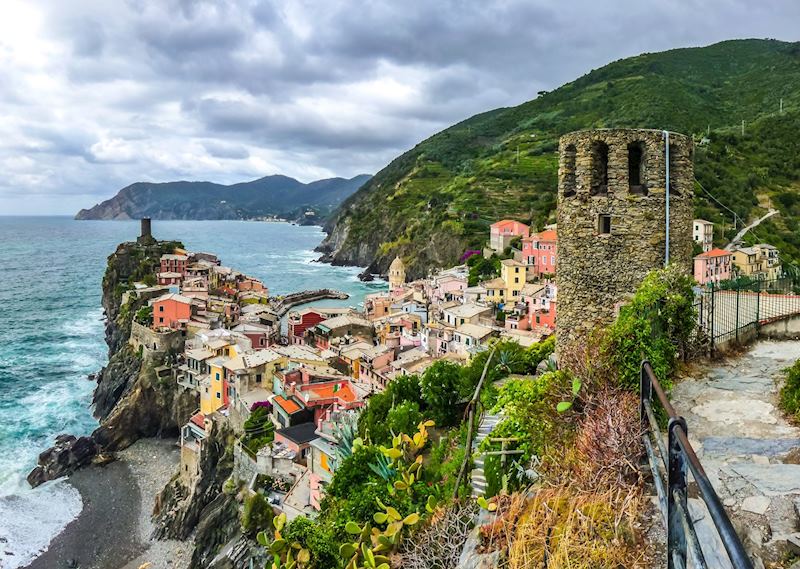
Following the coast southeast, the next town is Vernazza. Blessed with a natural port, Vernazza was historically the wealthiest of the five hamlets and its well-preserved medieval buildings make it the most popular to visit. Because it’s a two-hour walk from Monterosso al Mare, Vernazza gets particularly chaotic around lunchtime, which can make it hard to appreciate the elegance of the architecture.
In the middle is Corniglia, the only one of the five that can’t be reached by boat. You can take a train in, but be prepared to climb 377 steps up to the village on a wide switchback staircase built into the cliff face. It’s less crowded and more relaxed than the other villages and this is where I prefer to go when I visit the Cinque Terre.
Next-in-line, Manarola boasts the most vineyards in all of the Cinque Terre and is particularly known for its production of Sciacchetrà, a sweet dessert wine. Usually served with cheese, it’s made from sun-dried grapes and feels dense and silky on the tongue with hints of honey and figs.

The sea off Riomaggiore, the easternmost village, is particularly serene, possibly thanks to the protection of a nearby peninsula. That means that it’s exceptionally vivid, ranging from brilliant turquoise to intense azure to deep ultramarine. The fishermen who ply these waters lack a pier and instead pull their boats up onto the lower part of the main street. You can see them lined up along the sides in the evenings.
The Cinque Terre’s extreme topography means that old-fashioned ways of getting around are still the most effective. You can reach the villages except Corniglia via a leisurely ferry or you can take the train between all five. But mostly, when you visit the area, you have to rely on your own two feet.
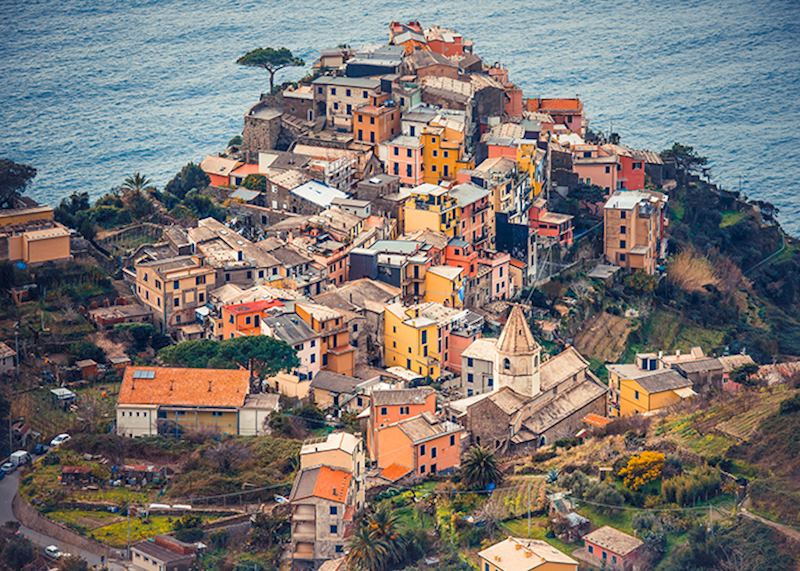
Walking in the Cinque Terre
Within the villages, the streets are often not streets at all, but alleys and staircases that run between the weatherworn pastel buildings. I enjoy spending an afternoon simply wandering through the lanes, climbing the stairs and admiring the soft, weathered hues of the narrow buildings. The steps are made out of bricks or concrete or carved from the rock itself, their sharp angles softened by time and feet.
A series of unpaved paths link the villages, former mule tracks that wend through the countryside. It costs a few Euros to get access to all the paths, which are part of Parco Nazionale delle Cinque Terre, Italy’s first national park.
The narrow trails take you past rows of terraced farms and vineyards, as well as lemon and olive groves. My guide, Guglielmo, named the different foliage growing as we walked — stunted maritime pines, prickly juniper bushes and the bright splashes of broom and myrtle in bloom.
The trails loosely follow the jagged coastline, sometimes shaded by the trees and sometimes opening up to wide vistas of the Ligurian Sea.
There are places where the way feels a bit precarious, just wide enough for one person with a stone wall on one side and a sharp drop down to the Mediterranean on the other. Because of their age and proximity to the sea, the trails are vulnerable to rock falls and erosion. Local authorities temporarily shut down any that are deemed unsafe, so I advise that you always travel with a guide who can check for any recent closures at one of the local information points.
The walks range from hour-long walks to marathon-length hikes, though they all involve steep sections and lots of steps. A guide can help clarify the best route to take, considering the weather, trail conditions, crowds from cruise ships and your enthusiasm on any given day.
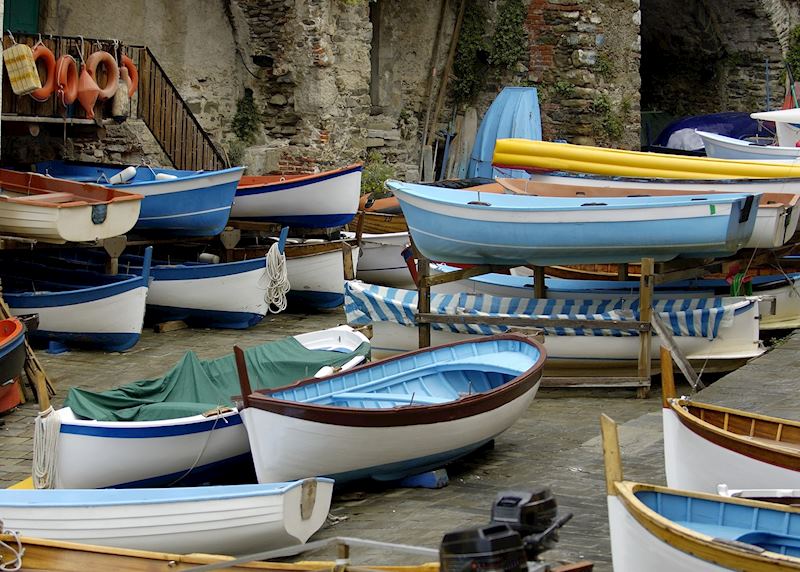
A common itinerary begins with a ferry ride to Monterosso and, from there, a two-hour walk to Vernazza, where many visitors stop for lunch. This means that Vernazza’s cafés are often crowded and always expensive. Instead, I suggest you get off the ferry at Vernazza or start walking earlier and push on all the way to Corniglia before eating.
High on a rocky promontory, Corniglia is the smallest and least-accessible village in the Cinque Terre. Because the ferry doesn’t stop here and the walk from the train is so high, fewer people make the effort to visit the Cinque Terre’s middle town. The thinner crowds give it a more relaxed and authentic atmosphere. It also makes a lovely spot for lunch or a glass of wine.
Last time I visited, I cooled off from my walk with a scoop of the gelato al basilico from Alberto Gelateria. The bright taste of basil lightened the luscious creaminess of the ice cream. I took my cone to the Belvedere di Santa Maria, a high sea-view terrace from where you can see all the villages. The breezy break made a delightful punctuation to my day.
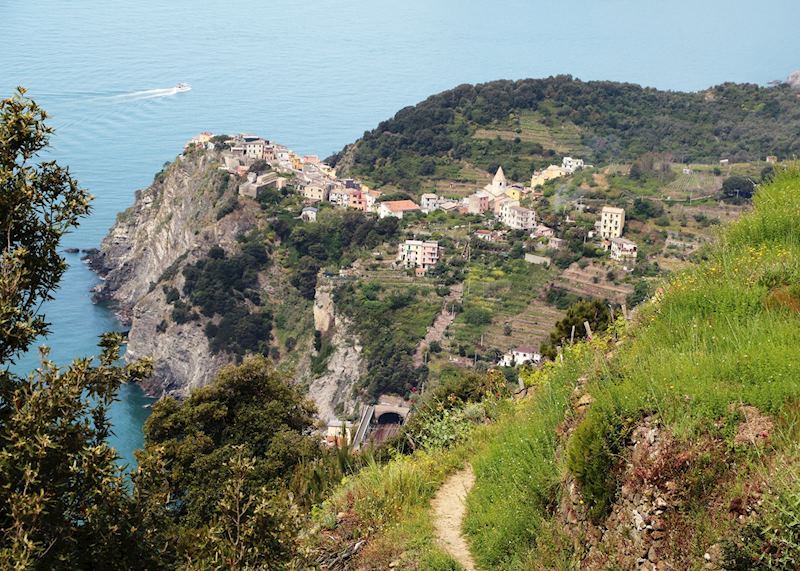
Where to stay when you’re visiting the Cinque Terre
Staying in one of the five villages — the Cinque Terre proper — is complicated. There aren’t many places to stay and the few that exist tend to be both poor quality and hard to book. Instead, I suggest staying in Porto Venere, located southeast of Riomaggiore on the edge of La Spezia Bay. With pastel-hued buildings, winding medieval alleyways and a serene cove filled with bobbing fishing boats, it's sometimes called the Cinque Terre’s sixth village.
You can catch a ferry from here to the villages and there are several restaurants, as well as a sandy beach, a marina and a seaside promenade. It’s also much less crowded, providing a calm respite from the bustle of the Cinque Terre as well as a convenient base for exploring the area.
The family-run Royal Sporting Hotel provides rooms that are comfortable, clean and quiet, if a little dated. The sea-facing rooms have balconies that look over the Bay of Poets to the island of Palmaria, and the alfresco restaurant offers views of the boat-lined waterfront.
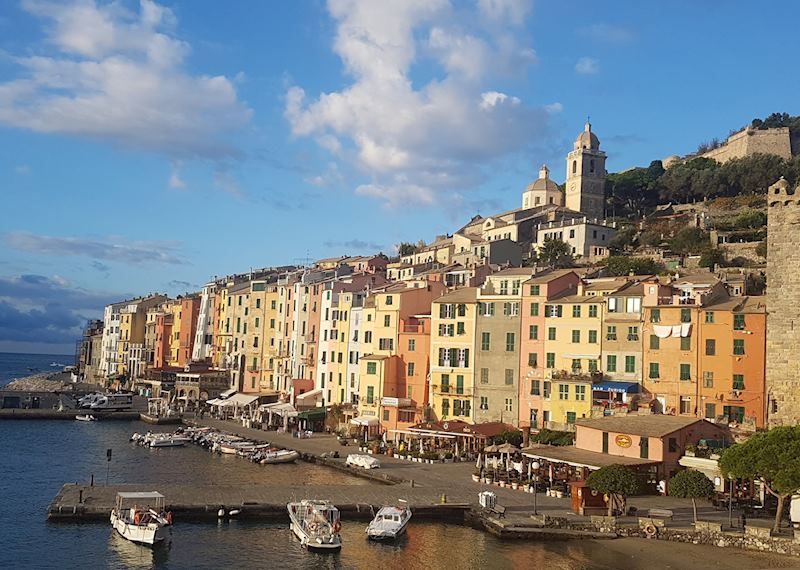
For a more indulgent stay, I suggest the Grand Hotel Portovenere, which offers elegant rooms and a spa. It’s conveniently located at the heart of the lively waterfront, close to many cafés and just a few steps from the pier where you board the ferry that will take you to the Cinque Terre.
What to eat and drink in the Cinque Terre
Like all of Italy’s regional fare, Ligurian cuisine is intimately tied to both the seasons and the bounty of the land and sea. That means pungent basil, tart lemons, rich olives, green grapes and an abundance of freshly caught seafood.
Sciacchetrà isn’t the only vintage that the area produces. Cinque Terre wine earned a DOC appellation (controlled designation of origin) in 1973. One taste of the crisp dry wine and you understand why farmers worked so hard to create terraces to be able to plant their vineyards here. Wine bars are common in the village piazzas and even along the trails, where you can take a break from your walk and enjoy a glass while admiring the view.
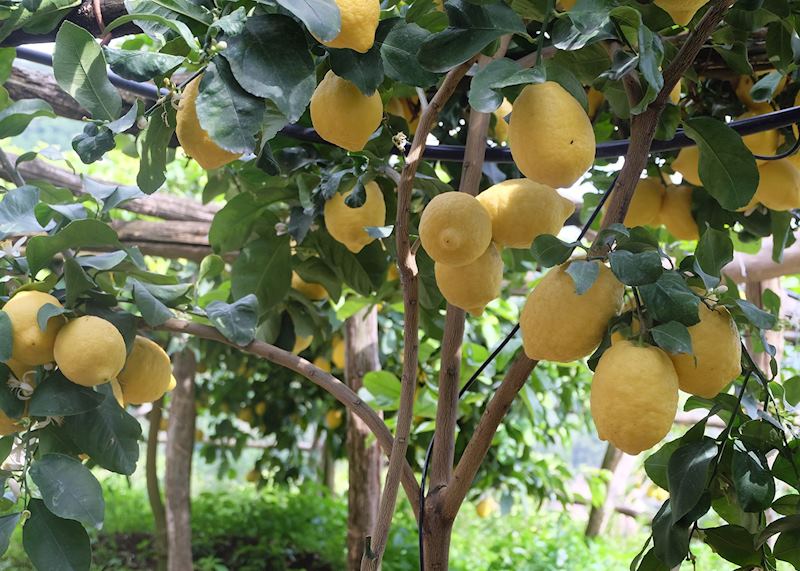
Fritti misti makes a nice light lunch. Literally ‘fried mixed’, the dish is a jumble of small fish taken from the catch of the day that have been battered and fried into crunchy, salty bites, traditionally served in a paper cone. You can expect to find anchovies, sardines, octopuses and squid, all topped with a wedge of lemon.
Basil flourishes in the Mediterranean climate and pesto alla Genovese is the best-known use of the aromatic herb. The unctuous green sauce graces all manner of local dishes, including pasta, vegetables, rice and soup. Ligurian minestrone was a revelation. Instead of being cooked in a tomato-based broth, at the end of cooking the vegetable soup gets a swirl of pesto, totally transforming the taste.
Best time to visit the Cinque Terre
I prefer to visit in early May or late September and early October. In May, the weather is warm but not too hot for hiking along the trails, and you can enjoy the spring blooms. Tourists arrive by the literal boatload starting in mid-May and stay through to the middle of September, so avoid those months. But as the temperatures cool and the grape harvest begins, the crowds thin out again and visiting becomes more peaceful.

